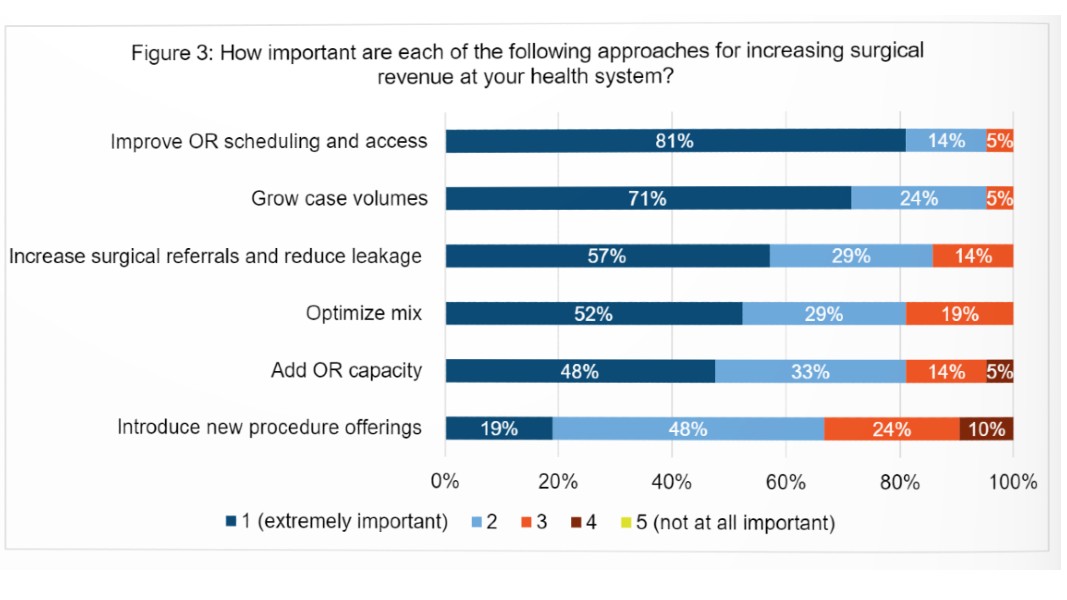Survey finds 95% of health system executives desire more automation and less reliance on manual OR processes
Increasing surgical services revenue is a top priority for healthcare systems, with automation seen as a way to accomplish it, according to a new survey of healthcare executives conducted by The Health Management Academy.
Seventy-six percent of respondents named increasing surgical services revenue as a top priority, while half the health systems represented said they plan to increase investments across their surgical services in the next two years.
The survey, which was conducted in August 2022 in partnership with Qventus, a provider of AI-based software for care operations automation, was completed by 21 executives whose titles include chief medical officer, chief operating officer, VP of perioperative services, VP of operations, VP of surgical specialties, surgical chair, clinical enterprise lead and business operations director for surgical services. The responding executives represent 19 health systems with an average total operating revenue of $6.3 billion.
Key findings include:
- Increasing surgical services revenue is a top priority for the majority (76%) of executives. About half (52%) of health systems are planning to increase investments across the surgical service line in the next two years.
- Health system executives are focused on end-to-end growth strategies. Top strategies to increase surgical revenue growth include: improving operating room (OR) scheduling and access (81%), growing case volumes (71%), and increasing surgical referrals to reduce patient leakage (57%).
- The majority (71%) of executives report 11% to 30% of their health system’s OR time is not optimally used.
- Nearly all (95%) of surveyed healthcare systems are looking to automate OR scheduling more and rely less on manual processes.
- All (100%) executives agree there is opportunity to improve surgeon satisfaction rates. Their strategies for improving satisfaction include addressing burnout, streamlining internal processes and using technology to augment manual tasks.
“This data confirms what we hear from our leading health system members: executives know their financial recovery from the pandemic depends on growing surgical revenue, and that requires driving integrated strategies that optimize access, case volumes and mix, as well as market share. Leaders recognize that manual processes are holding them back, and they view automation as an essential capability to grow their surgical services revenue,” said Brian Contos, SVP of Research & Member Insights at The Health Management Academy.
The crisis in surgical revenue has been aggravated by the COVID-19 pandemic and staffing shortages, which have cut into hospital operating margins. As a result, healthcare systems are looking for technology that will allow them to maximize their existing capacity without adding resources.

“The survey findings validate what we’ve been hearing from our health system partners,” said Mudit Garg, Co-founder and CEO of Qventus. “Hospitals are focused on making their perioperative services more productive and efficient, but their existing tools and EHRs are incapable of doing it. To gain a new competitive advantage, they need a new approach and are turning to automation software.”
The Qventus Perioperative Solution can automate strategic growth of surgical services. By combining AI & machine learning, behavioral science, and comprehensive data, the solution creates new white space on OR and surgical robot calendars, automatically fills open times with strategic cases, and identifies referral and outmigration improvement opportunities — while also giving visibility into OR & surgeon performance. As a result, health systems can unlock over 50% of blocks otherwise unused, increase robotic cases by 33%, and add over 2 cases per OR per month using existing resources.
To view the full report, click here.

